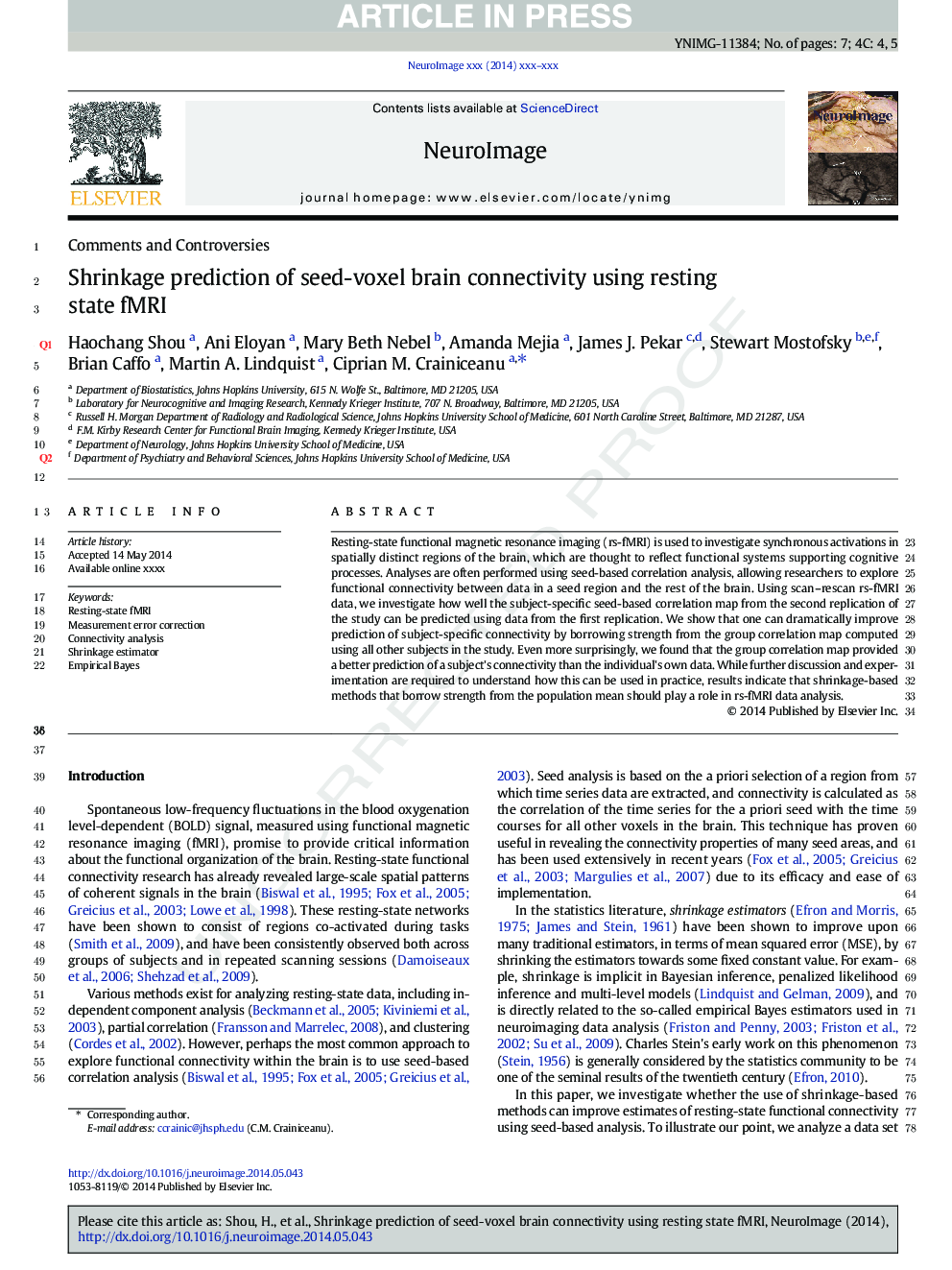| کد مقاله | کد نشریه | سال انتشار | مقاله انگلیسی | نسخه تمام متن |
|---|---|---|---|---|
| 6026134 | 1188677 | 2014 | 7 صفحه PDF | دانلود رایگان |
عنوان انگلیسی مقاله ISI
Shrinkage prediction of seed-voxel brain connectivity using resting state fMRI
دانلود مقاله + سفارش ترجمه
دانلود مقاله ISI انگلیسی
رایگان برای ایرانیان
کلمات کلیدی
موضوعات مرتبط
علوم زیستی و بیوفناوری
علم عصب شناسی
علوم اعصاب شناختی
پیش نمایش صفحه اول مقاله

چکیده انگلیسی
Resting-state functional magnetic resonance imaging (rs-fMRI) is used to investigate synchronous activations in spatially distinct regions of the brain, which are thought to reflect functional systems supporting cognitive processes. Analyses are often performed using seed-based correlation analysis, allowing researchers to explore functional connectivity between data in a seed region and the rest of the brain. Using scan-rescan rs-fMRI data, we investigate how well the subject-specific seed-based correlation map from the second replication of the study can be predicted using data from the first replication. We show that one can dramatically improve prediction of subject-specific connectivity by borrowing strength from the group correlation map computed using all other subjects in the study. Even more surprisingly, we found that the group correlation map provided a better prediction of a subject's connectivity than the individual's own data. While further discussion and experimentation are required to understand how this can be used in practice, results indicate that shrinkage-based methods that borrow strength from the population mean should play a role in rs-fMRI data analysis.
ناشر
Database: Elsevier - ScienceDirect (ساینس دایرکت)
Journal: NeuroImage - Volume 102, Part 2, 15 November 2014, Pages 938-944
Journal: NeuroImage - Volume 102, Part 2, 15 November 2014, Pages 938-944
نویسندگان
Haochang Shou, Ani Eloyan, Mary Beth Nebel, Amanda Mejia, James J. Pekar, Stewart Mostofsky, Brian Caffo, Martin A. Lindquist, Ciprian M. Crainiceanu,